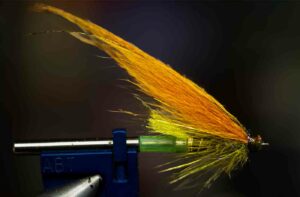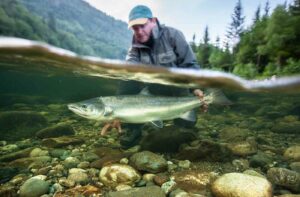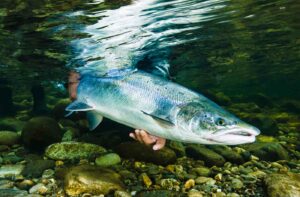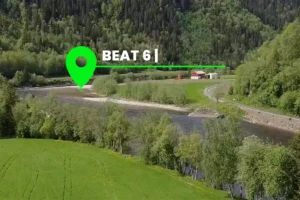The Illusion of Life
The ‘illusion of life’ is a concept discussed by several of the giants of salmon fishing history including Hugh falkus and Richard Waddington.
So what is the ‘Illusion of Life’ and how does it affect fly choice?
In his book about salmon fishing, Falkus described the perfect salmon fly as an illusion of life, a ghostly representation of something that would trigger the salmon’s suppressed taking interest. “If a salmon could speak” he argued that the best salmon flies would provoke them to say “what was that?” Not “there it is!‘
Falkus argued that the best salmon flies should be half-seen and then seen only at the last minute. Since the eyesight of salmon is much more acute than our own, disguising the fly, so that it comes as a surprise is essential to pull off the great deception. None of us truly knows why salmon take flies but most of us are agreed that it has nothing to do with hunger and that in order to catch a slamon fairly, an angler has to trigger an old feeding memory and cause the salmon to grab the fly instinctively. This is only possible if it does not see the fly repeatedly before the fly passes into its taking zone.
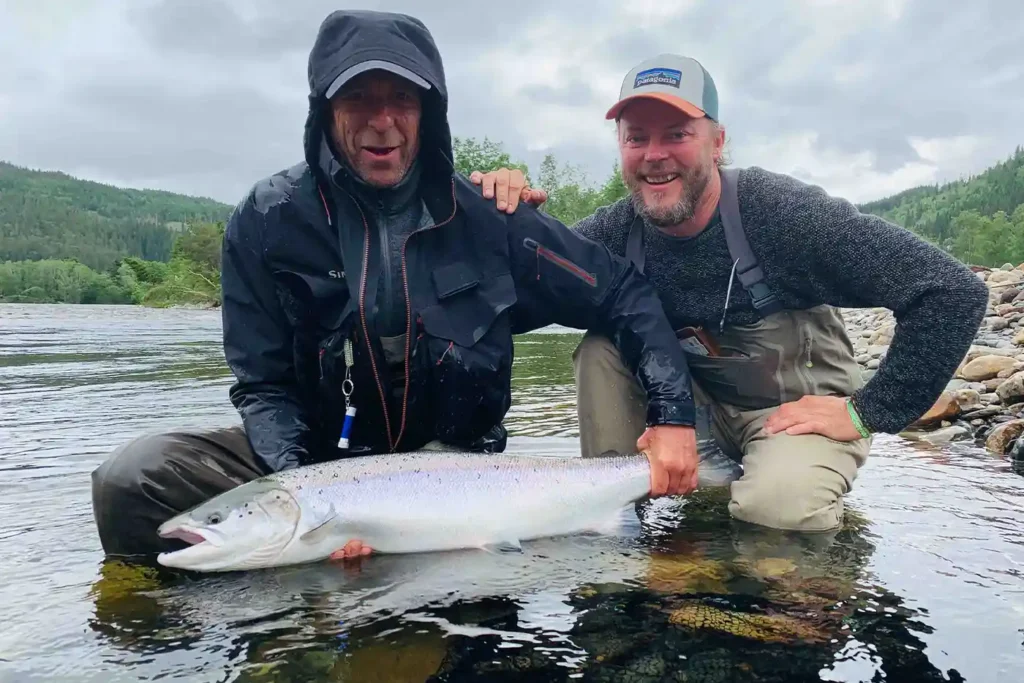
A fresh run salmon is much more likely to take than a fish that has been in the river for some time. Once the fish has left saltwater, it will live on its fat reserves, in the river, until it is time to spawn. It neither needs nor craves food. Yet, it can still be fooled into attacking lures and flies if we understand that its all a big confidence trick.
Resident versus Running Fish
Running fish are salmon that are moving up the river, moving toward the area where they will spawn during the Autumn. Sometimes this running behaviour can be aggressive and salmon are running qucikly, covering huge distances in a short period of time. However, in most instances, salmon move up the river by stages, resting awhile in pools before moving on. It can take several weeks to reach its final resting place.
During the periods when the salmon have stopped running, whether it is for a day or a month, the salmon become ‘resident‘ in a pool and over time, less responsive to anglers’ flies and lures. Salmon tend to be most aggressive when they enter a pool for the first time. New fish coming into the pool shakes up the old residents and creates competition. These are the times when most salmon can be caught but perfect conditions rarely last very long!
Of course, salmon must see the fly to take it in the first place. Getting the attention of running fish is more difficult than resident salmon because they are fixed on migrating upriver. Yet, when they stop and rest in a pool, they are much more likely to see and take the fly. Whilst I don’t believe that we catch many fish that are actually running at the time they take, we do catch running fish that are resting for a short period alongside a boulder or in a deep, steady run beofre moving on and continuing their journey. These fish may well be attracted to a brighter, more obvious fly than those fish that have been in a pool for hours, days or even weeks. These are the fish that Falkus was referring to when he talked about the importance of the ‘ILLUSION OF LIFE’ and they are much more wary than running fish. Resident fish tend to take the half-seen fly rather than the bright, flashy bauble.
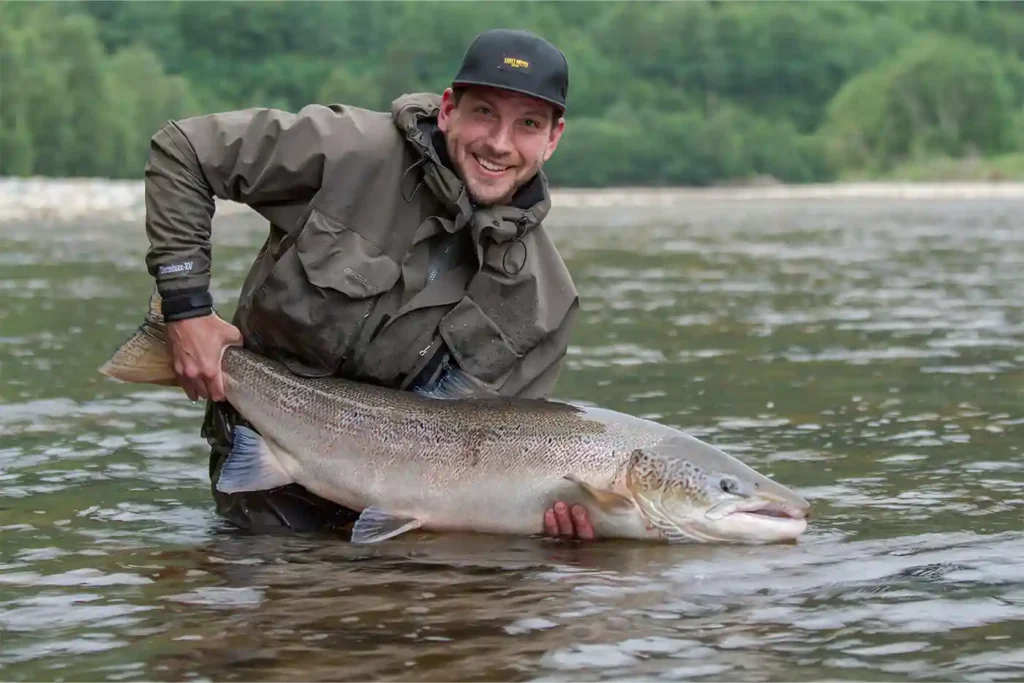
Resident salmon that have been in the river for some time can be difficult to catch. Here Freddie Larsson cradles a forty pounder fooled into taking his small tube fly. Resident males like these do become more aggressive in August as the spawning season approaches.
Flies and the Colour of the Water
If you buy into the ‘Illusion’ theory, flies will be chosen to either blend in with or stand-out from their surroundings. Flies that match the tones in the water will be harder for the salmon to see and match up to Falkus’ theory perfectly. In coloured water, the decreased visibility disguises the fly for us and in this case, we need a much brighter, flashier fly just to get it seen. The illusion of life is still valid but the change in the colour of the river means that the flies need to be made either larger or with higher contrast colours. Usually both.
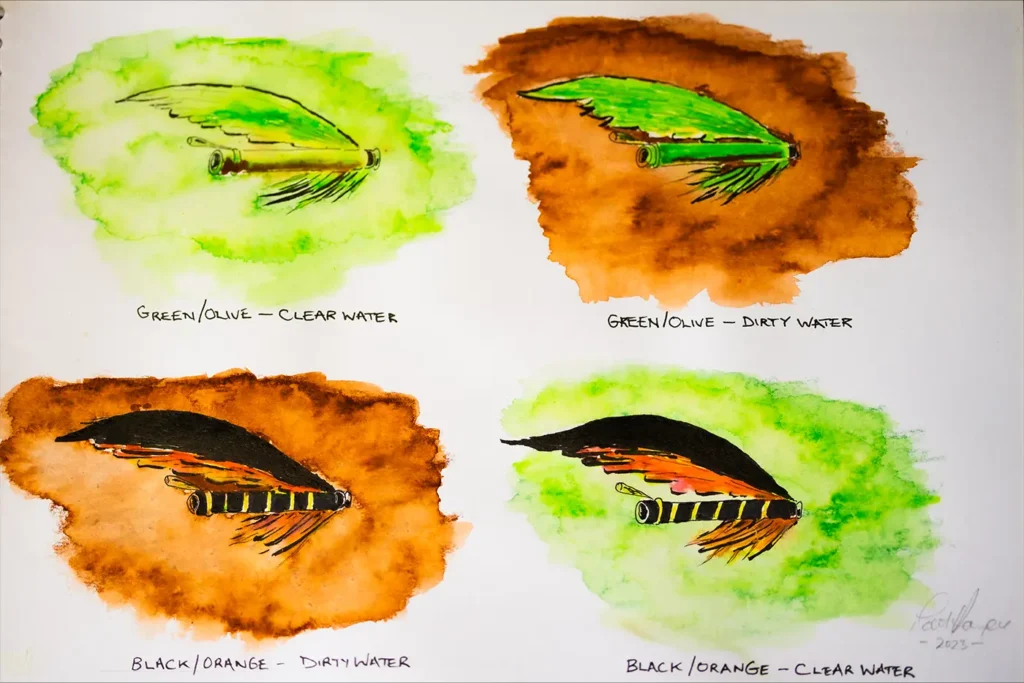
Here are two types of fly – a high-contrast brightly coloured fly at the bottom and an olive banana fly with low contrast and subdued colours at the top. Gaula varies from clear (tinted yellow green) through to dark brown and even black in a big flood. Here’s how the flies look/stand-out in different water conditions. In normal water, the olive banansa fly pulls off the illusion of life yet becomes less visible in flood water, where the black and orange tube shows up much better against the dark water.
Water Clarity
During a flood, water clarity decreases dramatically but some pools, especially those with a sharp bend, will provide better conditions in the quieter water. In this situation the fast water is pushed to the outside of the bend. It is turbulent, coloured and may well be choked with branches and leaves. The water on the inside is moving more gently, contains less suspended silt and detritus and is more comfortable for the salmon and particularly less irritating to its gills. The water where the fish lie is most likely to be the cleanest and you should choose a fly that looks good in the less tinted water and may look poor out in the main flow.
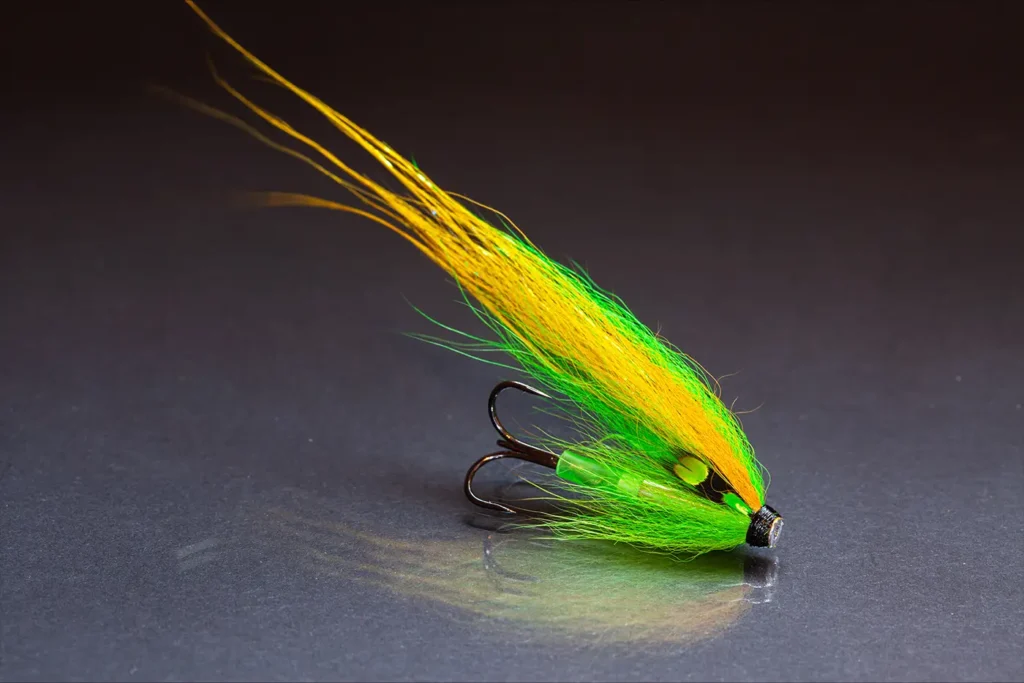
This bright banana fly works well in both clear and coloured water. When the river floods, the fly shows up quite well against the dark water and yet it blends in very well in low, clear water. This may explain why th banana flies and its variants have dominated catches on Gaula in recent years.
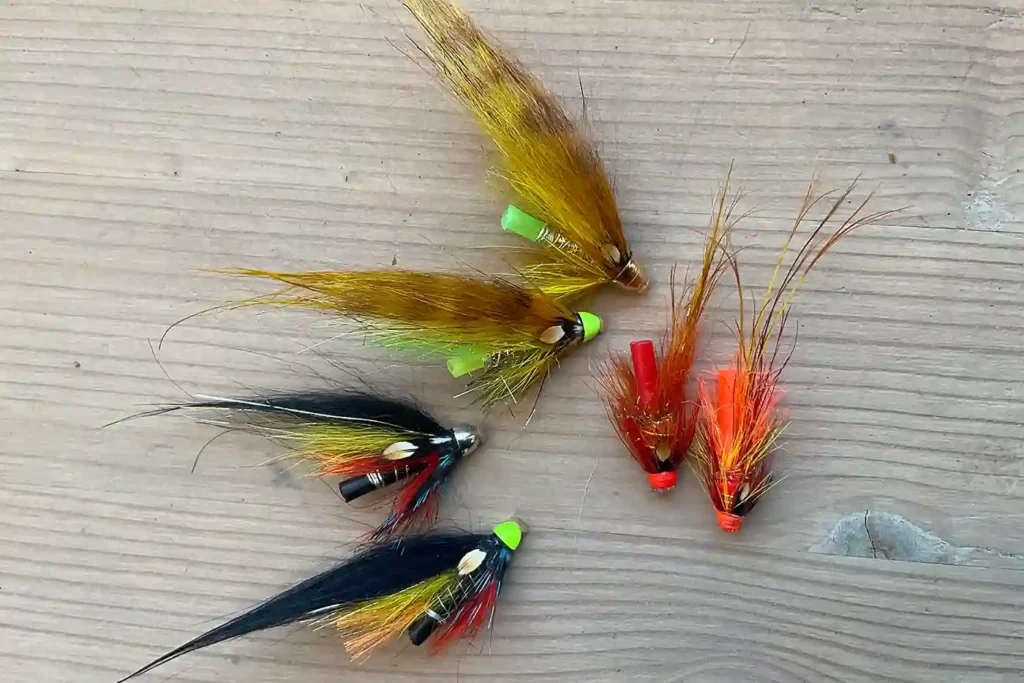
In coloured water, high contrast flies work much better than dull flies. More flash and ‘bling’ can be included, the colours sharper and brighter…
Every time an experienced angler chooses a fly, a choice is being made whether to get the fly to stand out or blend in. Lower contrast flies blend in much better than those with high contrast colours (black and orange, for example). The size of the fly also has a huge bearing on whether the fly gets seen too soon or at the last minute. Generally speaking, the lower and clearer the water, the less flash I use. With long-term residents, I have found that ‘dull’ flies with earth tones outscore the brighter, flashier ones.
The aggression of salmon and their willingness to take flies generally deteriorates over time spent in the river but there are brief periods when even the most wary fish become catchable and in these circumstances, small, dull flies seen at the last minute are a good bet.
A friend of mine put it very well when they aid that with resident fish you only want them to see ‘the arse of the fly’ whereas when they are running, showing them the side of the fly can provoke aggressive takes. Interesting.

Some people, myself included believe that tone is as important as colour with salmon, if not more so. Seen in tone, the low contrast flies, if they match the tone of the water, become almost invisible to the last minute.
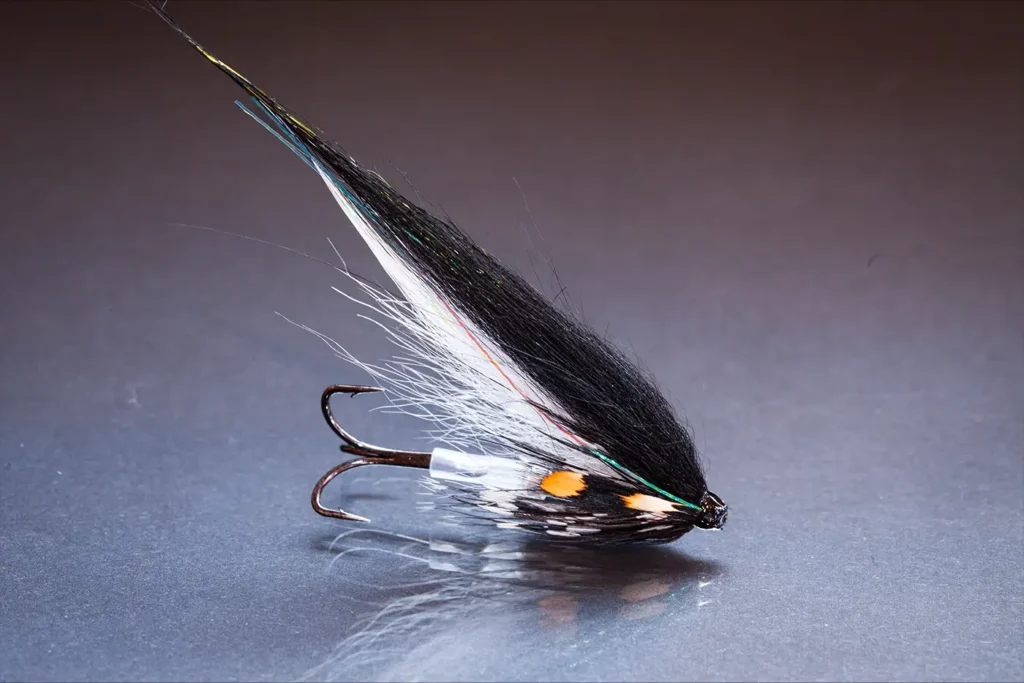
Walther’s shadow, a fly with no colours, only time is very effective on Gaula. More often than not, I omit the ‘eyes’ these days.

